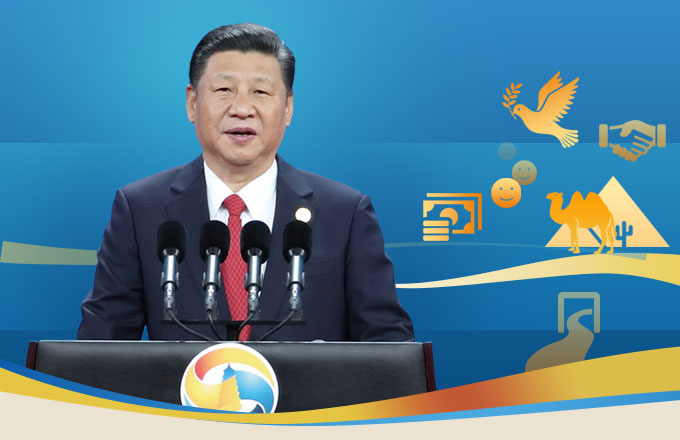Science cooperation network in works
China aims to complete a cooperative network in science and technology for countries involved in the Belt and Road Initiative by 2030, it was announced Tuesday.
The network will be indispensable to the development of science and innovation by the middle of this century, according to Bai Chunli, president of the Chinese Academy of Sciences, who spoke at a news briefing in Beijing.
"Since the initiative was proposed in 2013, the academy has expanded its global cooperation and outreach," he said. "We're providing technological support and services to help countries tackle practical issues."
The academy has launched the International Outreach Initiative and is cooperating closely with the World Academy of Sciences for the advancement of science in developing countries, a UNESCO program based in Trieste, Italy.
The Chinese Academy of Sciences has signed more than 200 international cooperation agreements with 60 countries. In addition, more than 600 of its scholars are working with international organizations or major science publications.
It has also trained about 1,800 people from Belt and Road countries, focusing on common issues such as climate change, water security, green energy and disaster prevention and relief, Bai said.
"Many countries have fragile ecosystems, and China also has similar issues," he said. "Our research aims to help. At the same time, advanced technologies from other countries, like sandstorm prevention, can benefit us."
The academy is setting up nine overseas centers for science and technology cooperation and has launched more than 20 major science projects to address common challenges for Belt and Road countries, such as weather surveillance and environmental protection.
"These are parts of the academy's international science cooperation network, which focuses on strategic counseling, technology cooperation, training and the commercialization of scientific achievements," Bai said.
More than 30,000 foreign scholars visit the academy to take part in exchanges and cooperation every year, and 2,000 now work at the academy, in most academic fields.
China has attracted more than 1,500 foreign students from developing countries-in some cases offering scholarships. The Chinese academy plans to train about 500 master's and doctoral students a year, according to Cao Jinghua, director of international cooperation at the academy.
"Talent forms the foundations for exchanges and cooperation," Cao said.
"We hope our programs will equip foreign students with the skills to make a contribution in their countries, which will benefit the initiative in the long run."
The Chinese academy will continue to expand the cooperation network based on its advantages, and eventually push it onto the world stage, he said.
So far, 22 countries have joined the academy's initial framework. "We welcome other countries' participation in the network and taking part in the construction of the Belt and Road," Cao said.
- Preserving a Chinese icon: Great Wall needs rescue
- Chinese museums receive 900m visitors each year
- Chinese man sentenced over selling wildlife online
- Former senior Jiangsu official sentenced to four years for bribery, illegal foreign exchange purchase
- Police crack down on illegal online animal trade

























